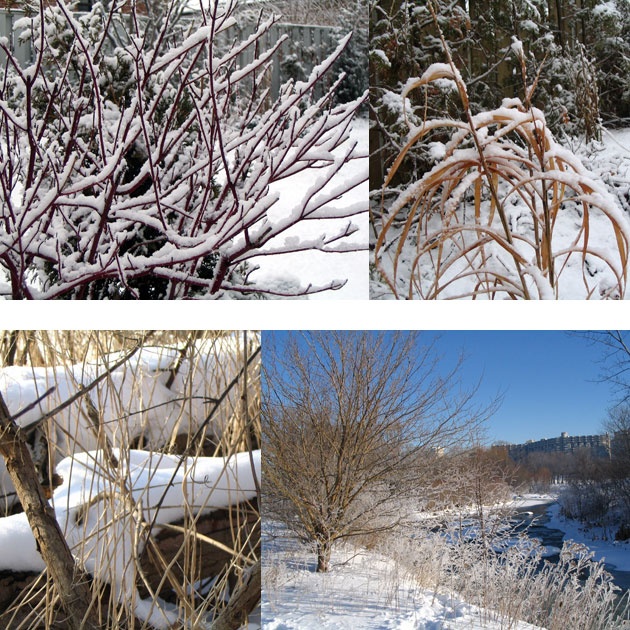
The reality of living in Ontario, Canada, is that we experience winter in varying degrees of severity from November until roughly March.
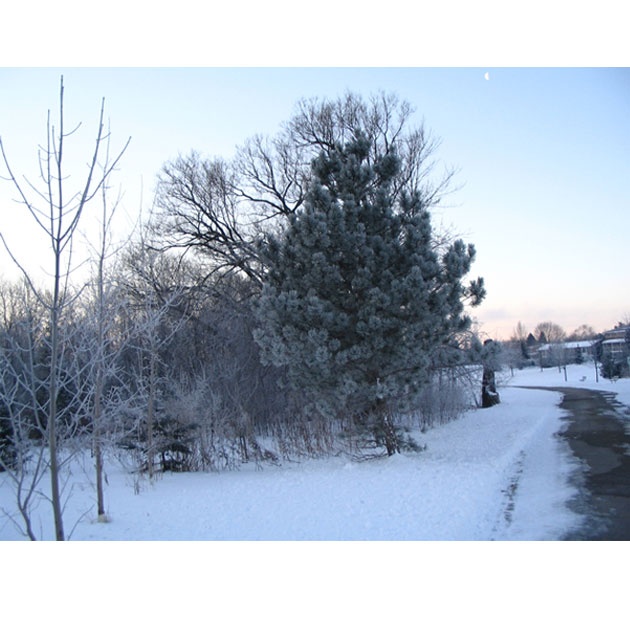
Whether you love the winter or not, one problem you will probably have is dealing with ice and snow on your driveway and paths. (If you live in a condo, townhouse or apartment, you can stop reading right here and indulge in some self-righteous smirking. ;-)).
In what we refer to as the GTA (General Toronto Area), which includes Toronto, Scarboro, Missississauga, and Oakville, we get varying amounts of snow, but usually nothing compared to outlying areas such as Oshawa, Ajax to the East, Newmarket, North Bay and Sudbury to the North and Hamilton, Kitchener-Waterloo and London to the West.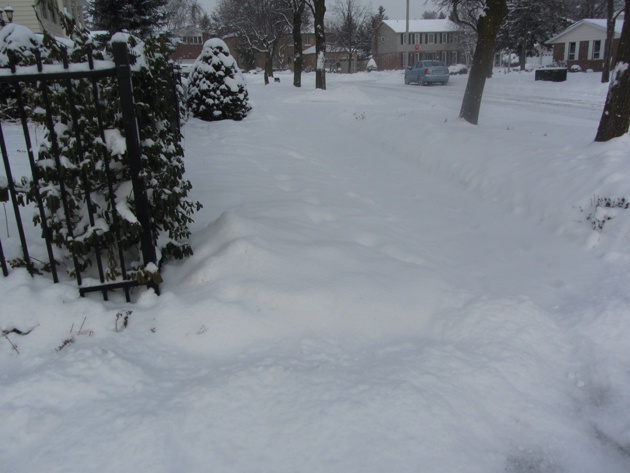
In a really bad year we might get 1 to 2 feet of snow in a single snowfall, and we might get two such snowfalls in a week. (One exceptional year, some may recall, we got a monster snowfall which completely paralysed the City of Toronto and caused the then Mayor to call in the Army to help straighten things out, something Torontonians are still trying to live down. ) Mostly, however we get 5 to 10 Cms and maybe 2-3 times in one week, then periods of weeks when nothing more than wind and cold occurs. (I'm generalising here, based on the past 10 years ;-)).
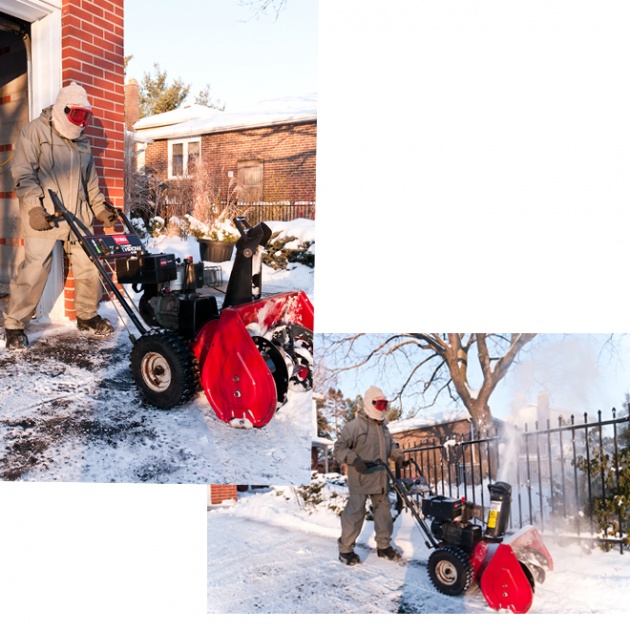
So, once we are confronted with a pile of the white stuff, we need to shovel or blow it away, but then we are usually left with a thin coating of snow and ice which needs to be dealt with so as to prevent people from slipping and falling.
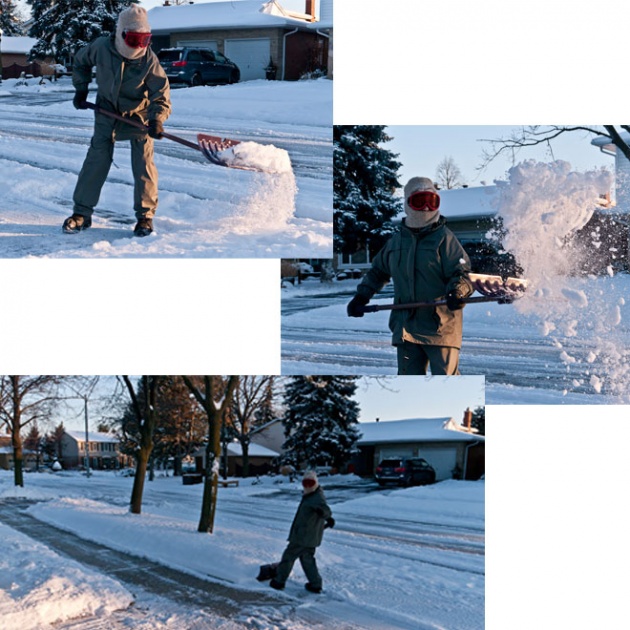
Melting the snow and ice and saving the environment
Over the years, I have gone from being a big user of the most common de-icer - Salt (Sodium Chloride) to being a user of something called Calcium Chloride. At first, the "scary" chemical name put me off. However, the nice guys at my local contractor supply store, Chauncey Builders Supply, explained the benefits of this scary sounding product.
They said that it melts at a much lower temperature than salt (Rock Salt: -15ºC (-25ºC)) Calcium Chloride -25F -31 C) it does not leave a white residue on the driveway or concrete walks; it does not cause surface damage to concrete and treated concrete areas; it is much less harmful to bordering lawns and flowerbeds; it is much less hurtful to pet's paws and pads, much less toxic if ingested by pets (unlike products containing anti freeze (Ethylene glycol); it's soil penetration is much less pronounced than salt, and finally, Calcium Chloride disappears completely once it's melting operation is over.
So, after this big build-up, I got a couple of bags and tried it out. I would have to wait until the spring to see if the lawn was unscathed, but it's de-icing efficiency was incontravertible. It worked a lot better and faster than salt and did not irritate and burn our dog's feet. I loved how, after shovelling, an application of Calcium Chloride would quickly melt any residue and leave a clean, black driveway (which left the neighbours envious).
In the photos below you see a light snowfall which I didn't want to shovel 1) an untreated driveway surface, and the outside temperature is -15C. In 2) I have sprinkled a light dusting of Calcium chloride to one side of the driveway and within 5 minutes it has begun to melt. in 3) the snow has melted wherever I applied the product, and that was accomplished in 30 minutes. Had it been warmer out, the melting would have been faster.
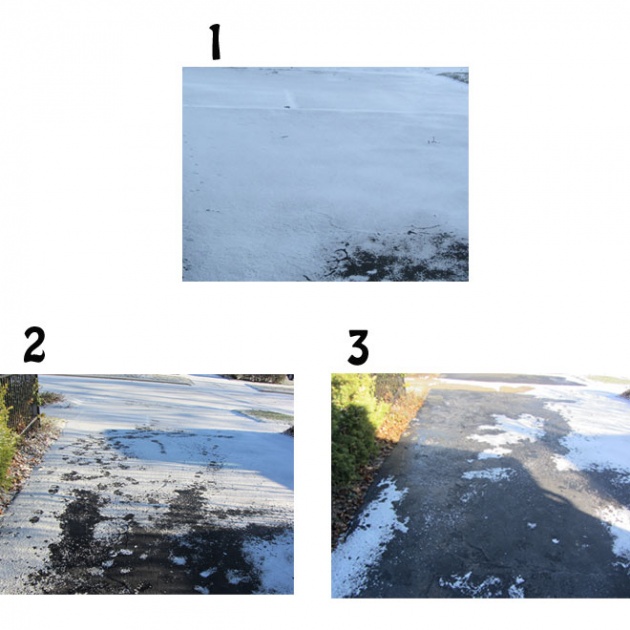 In
In
In the spring I found no evidence of browning or typical salt damage to the edges of the lawn, and none of the perennials or evergreen shrubs along the border of the driveway had suffered any damage at all. The concrete pathways did not appear to have suffered any deterioration.
Elated at having solved a very irritating problem, I stocked up on Calcium Chloride and have been using it successfully on my property and on client properties for the past 4 years.
No Calcium Chloride Available ;-(
Fast forward to fall of 2013. I went to my usual supplier of Calcium Chloride only to find that they had sold out whatever they had from the previous year, and had not gotten in the new supply of product. I was surprised, since normally by the end of October the product is in stock. I inquired of a couple of other places where I have been able to pick it up and was told that they are no longer carrying it. I searched extensively on the internet and found a few manufacturers, but no distributors. I contacted a few of these to see if they could point me at a supplier. Several did, but unfortunately, they suggested suppliers that are no longer carrying the product, a fact of which they did not seem aware!
Finally, I found the website of a company called CNW Northern Resources which listed a warehouse in Scarboro and had a contact email address (instead of the usual annoying online contact form). I emailed and asked if they knew of a local (Mississauga) distributor. I got a fast response from Neil Wright, Director /Sales Manager for the Ontario operation, and was told I would be able to get 50LB bags of the product at a location in Mississauga. The price given was competative and the pickup location was handy, so I rushed off to get a couple of bags.
The Wright Connection
This is when I met Neil Wright and his charming partner Li. They are the joint operators of the CNW Northern, Canadian branch, which supplies them with MaxMelt, with the main ingredient being Calcium Chloride.
The Wrights are from Winnipeg, Manitoba, so they know a thing or two about snow and ice! Therefore it makes perfect sense that they should be marketing and selling a snow and ice melting product. Neil and Li decided that they would like to go into business for themselves and the idea of marketing and selling an effective and environmentally friendly ice and snow melting product really appealed to them.

The Wrights are mainly interested in distributing and selling Calcium Chloride on a consumer level. They would like to ensure that places where you would expect to find snow and ice melt products, also carry their product. I asked them if they could think of any reason why I had such a hard time finding the product this year. The only thoughts that came to mind were possibly the size of the packaging (50lbs bags) and the chemical name as opposed to some more "friendly" name, both of which may have reduced sales due to consumer resistance, which would in turn cause retail sales outlets to stop carrying the product.
The Wright's main customer base is currently made of people in the landscape industry. These people want large amounts of the product that they can load into their trucks and apply after snow plowing operations are done. They don't really care what the product is called, they want something that works and that they can assure their customers will not harm plants, pets or driveways. Typically these people buy in bulk, but the 50lb bags are also well liked and are available at the Scarborough warehouse.
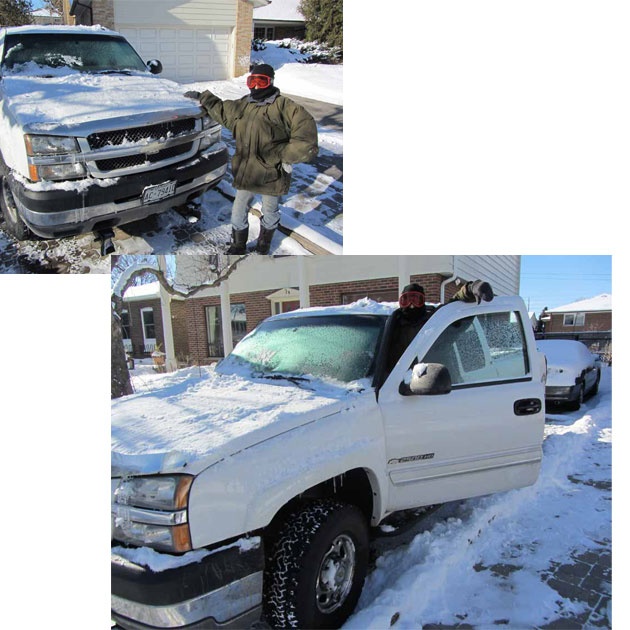
Dispelling the myths
In order to get Calcium Chloride back into retail stores, customers have to be educated. They need to understand the difference between products that claim to be environmentally friendly and highly effective, and ones that actually ARE environmentally friendly and actually work very well. If consumers understand then they can request their local retail outlet to carry the product they want.
The average customer walks into the store and would like to get as many items as possible in one trip. They will pick up whatever snow melt product "jumps" out at them and looks convenient and effective. Most modern shoppers are big on convenience. For example, folks may be looking for a smaller quantity in a convenient dispenser. A hand held 5lb jug of snow melt for $7.99 seems preferable to a 50lb bag of snowmelt for $18.00. If the jug has a name that is reminiscent of something "environmentally friendly" that seals the deal, even though they are paying a lot more for that jug, and even though upon close inspection that jug may have a high content of rock salt and is therefore not so environmentally friendly. They see a nice dispenser jug that they feel they can easily pick up and carry versus the large bag.
De-icing products
We asked Neil and Li to tell us a bit about some of the other available consumer de-icing products.
They said that the following choices are available: Salt, Sand (Sand does not melt, it only gives traction), and also various snow and ice melting products which are touted as being more environmentally friendly than plain old rock salt.
Neil said "Salt works well but the drawbacks are that it melts and flows into storm sewers, into your soil and leaves white marks on your driveway and paths. It is quite destructive to certain types of concrete finishes. Salt leaches into the soil and if applied to surfaces adjacent to lawns, flower and shrub beds can cause damage. Lastly, salt gets into your pets paws and burns their pads. Excessive licking of the paws to remove salt can make them ill."
He said that Sand is effective as an anti slip agent and works well when mixed with salt or another melt product. However, it too washes into the storm sewers, and it should be used sparingly.
Many muncipalities are trying to get homeowners and businesses to reduce their use of sand and salt since their use results in increased costs for upkeep of the storm sewer system.
So what about all these other snow and icemelt products? Neil said that many other products available for de-icing may contain rocksalt, The labels do not always list all the ingredients, and some products list none of the ingredients, but simply make claims "Safe for pets" "Environmentally Safe" "safe on concrete and flagstone".
Some of the leading de-icing products contain a coctail of products, including some contain Ethylene glycol, Magnesium Chloride, Potassium Chloride, Urea and Sodium Chloride. Since the product does not always list the ingredients, it is hard to make an informed choice.
So What About Calcium Chloride?
Neil says this is basically a traditional ice melt product.
It will melt ice to temperatures of -25˚F -31c. It gives off heat as it dissolves which melts the ice quicker. It gradually breaks down into a viscous liquid which continues to melt snow and ice until it has completely dissipated.
Calcium Chloride is both economical and effective and environmentally friendly in that you need to use less of it on your surfaces than other products, which means less of it getting to the environment and less money spent by the user on getting good results.
What about the other Ice Melting chemicals?
Neil says there certainly are others out there, but not as available to the consumer in their pure state, usually mixed in to various de-icing and melt products, and often used by commercial outfits and cities in their snow clearing operations.
Magnesium chloride - is used for low-temperature de-icing of highways, sidewalks, and parking lots. When highways are treacherous due to icy conditions, Magnesium Chloride helps to prevent the ice bond, allowing snow plows to clear the roads more efficiently. Will melt ice to temperatures of -25˚F -31C
Potassium chloride - Is more expensive than other products. Works well when mixed 50/50 with rock salt. Will melt ice to temperatures of -12˚F -24C. Relatively safe but can still cause plant injury if over-applied.
Urea - Commonly used as a fertilizer but is also an effective ice melter. Will melt ice to temperatures of -15˚F -26. Over application can harm vegetation. Urea is often one of the products found in off the shelf snow and ice melt products.
Calcium magnesium acetate (CMA) - Is made from dolomitic limestone and acetic acid (main compound in vinegar). It has little affect on plants and concrete but it's performance decreases at temperatures below -20˚F -28C. It works differently than other materials in that it does not form a brine like the salts. CMA helps prevent snow particles from sticking to each other on the road surface. It prevents re-freezing more than it melts ice and tends to leave a slush.
It is generally believed that repeated use of any ice/snow melt product may eventually contribute to some degradation of the concrete and other surfaces to which it is applied, some products are gentler than others, and the less you need to apply the better.
Keep it Natural
What about the "natural" snow melt products, such as Sugar Beet juice? Li (who majored in environmetal science)says this is a fairly recent addition to the snow melt product group, and is used in conjunction with salt brine by some commercial operations and cities (Ontario's Niagara region has been experimenting with it for the past three years) more recently City of Toronto began adding beet juice to it's salt brine, and in Huron County they have been mixing beet juice and brine to pre-spray the roads to deal with sudden snow squalls. The combination of the Sugar Beet juice with the salt causes the salt to be more sticky and melts ice at a lower temperature than pure salt or brine. Li says that Sugar Beet juice has a low environmental impact since the Sugar Beets are being processed for various different things anyway (white sugar, molasses). The leftover pulp is used for farm animal feed along with the foliage, and all that is left is the juice. So they are reclaiming the juice which is usually thrown out at the end of the processing. An excellent example of recycling.
Sounds like a progressive product. What about negatives? Li says that the Beet juice does not work on it's own, it is usually mixed in with a salt brine solution, can leave stains on sidewalk and walkway surfaces, and some instances on cars, and mainly, at the moment is not readily available to the consumer.
One commercial enterprise I know explained that they had been using Beet Juice to de-ice on all outside surfaces until they found that it left semi permanent brownish stains on the concrete portions of their outdoor space. They are still using it on the driveways, but have reverted to salt for the concrete.
Some people advocate using Kittylitter. This will not melt the snow and ice but will provide some traction. A few folks advocate using nothing to de-ice, which given our climate may be looking at winter through rosy tinted glasses!
Now that I know where to get it, I'm going to continue to use Calcium chloride to deal with ice and snow, comfortable in the knowledge that I am being environmentally responsible by using this product.
-----------
Footnote 1:
The only downside to the product is that it must be kept dry. If it gets moisture in it, it gets hard and lumpy. However, if it does get into this state, it can be turned into a brine by adding some water to it. Once it has dissolved, it can be put down on the target area and it acts to prevent ice build up.
The best way to use it is to clear most of the snow off first, then apply a light sprinkling of the product. If an ice storm is expected or freezing temp, apply a light sprinkling to all surfaces to prevent the ice from sticking.
For traction during freezing temps or ice storms, mix 1/3 coarse sand to 2/3 Calcium Chloride.
This is the contact info for the people from whom you can get it in Ontario, Canada.
CNW Northern Resources Inc.
Neil Wright
neil@cnwnorthern.com
416-906-5981
Footnote 2:
As I mentioned, back in the early fall, I had a lot of trouble finding the product of MY choice, which is Calcium chloride. No one seemed to be carrying it. In the past few weeks, I notice that Rona is carrying bags of both Calcium chloride and Magnesium chloride, and even a mix of Calcium chloride and rock salt.



